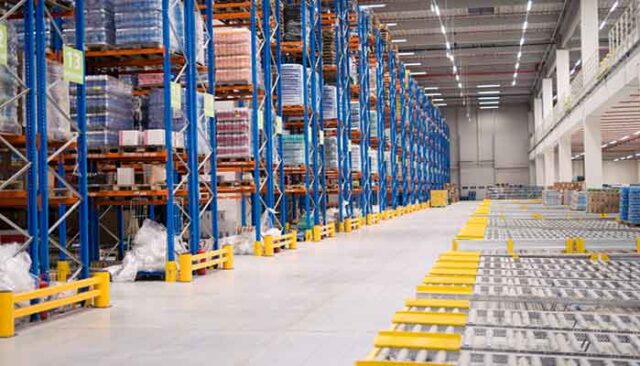The warehouse. The word conjures up a vision of a vast indoor space in which you walk down claustrophobic aisles between crates and boxes stacked one on top of the other nearly to the towering ceiling, where dim bulbs cast an eerie glow on the thickly shadowed regions below. It may take a while to find the location of your stored item, Is it just me, or do you smell old fish? Well, most certainly there are still some warehouses out there that maintain that kind of creepy image, but, like so many other technologies and institutions, the warehouse has evolved, and the modern version bares little resemblance to its humble predecessors.
Case in point, the ultra-modern high-tech warehouse storage solutions of today are brightly lit, highly organized, and properly spacious places where your business can store its most important goods in a safe, clean environment managed by a highly trained professional staff. They know exactly where every item is properly placed so it will never be damaged, and there is zero chance of any unpleasant fishy aromas.
Businesses are constantly evolving and transforming themselves in response to new technologies, warehouses included. Still, the image of the musty old-time warehouse does maintain a certain mystique, so let’s travel back in time to have a look at how warehouses have changed throughout the centuries.
The first versions of what we now call a warehouse began far back in ancient times and were used to store grains and livestock. They were rather modest structures, and, lacking even a dim light bulb, were quite dark inside.
Then the Romans (if it’s not the Chinese it must be the Romans) constructed the Horrea Galbae about 2,200 years ago. This was the direct forbearer of the modern warehouse, a large structure specifically designed for the storage and retrieval of goods. It was used for the safe keeping of grains and also commodities like olive oil, wine, textiles, and yes, fish.
The English word “warehouse” was coined in Britain in the 1300s to describe a structure or room for the storage of merchandise or commodities. By that time the “wares” included manufactured items like ceramics and glassware.
In the late 1700’s during the Industrial Revolution the word “warehouse” began to be used as a verb, “Let’s warehouse the shipment”, and is still in use today.
Warehouses became the hearts of commerce and railroads their arteries, carrying merchandise from the seaside harbours inland.
The Second Industrial Revolution that began in the 1800s saw the invention of the lightbulb, telephone, and the internal combustion engine followed by the automobile. the global economy blossomed and warehouses, which were beginning to resemble those of today although still rather dimly lit, were more essential to trade than ever before.
If you ever happen to be in Liverpool and want to experience an old-style warehouse in person, visit Historic England’s Storehouses of Empire exhibit on the Mersey. There’s even a pretty fair chance it will smell like old fish.


































